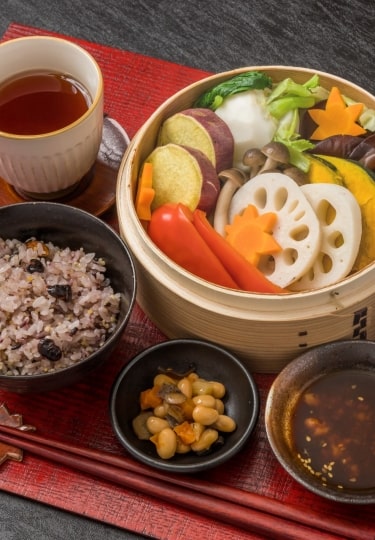Kyoto was home to the imperial court for more than a millennium. The local cuisine, shaped by that history, leaves visitors with an impressive choice of dishes and delicacies to try.
Kyo ryori (Kyoto cuisine) is a fascinating subject, a delight to anyone who loves food. It is shaped into five categories, including banquets and ritual meals.
What all five have in common is a basis of fresh, seasonal, regional produce. These are then cooked simply, so the ingredients shine through, and are served with the aim to delight all the senses. Here are the best things to eat in Kyoto.
Nishin Soba
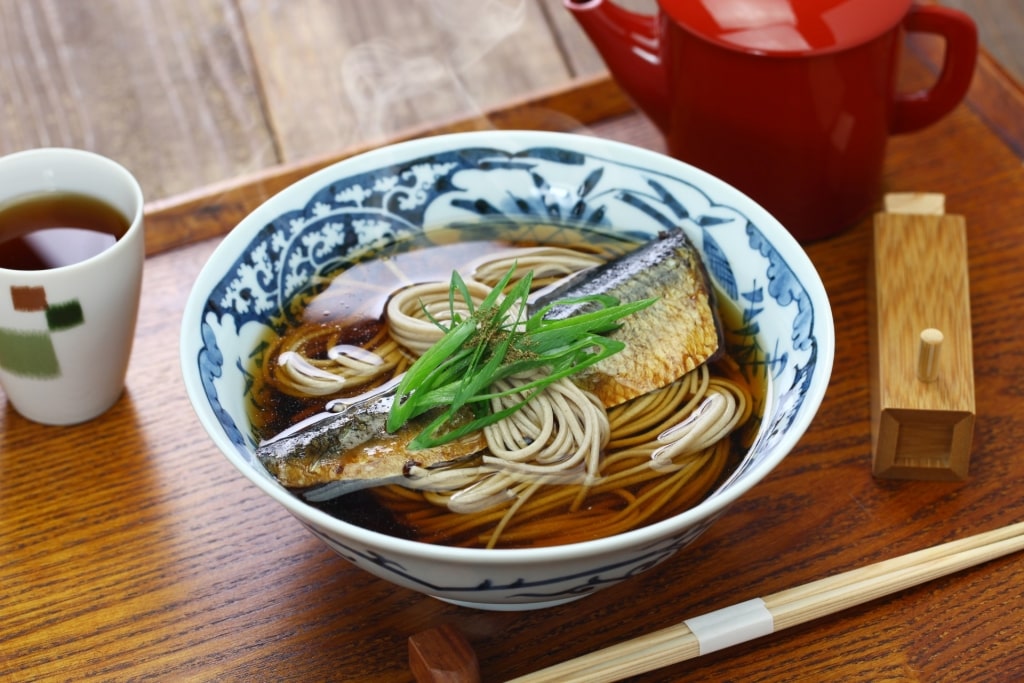
Nishin soba
An effective way to preserve fish is to dry it, and nishin soba is made with dried herring (“nishin”). Slow-cooked, with a sweet soy dressing, it comes in a bowl with a base of buckwheat soba noodles, and a broth.
The broth is enriched with soy sauce, mirin (rice wine), dashi (a stock from dried fish), and shiitake mushrooms. The whole is a complex mix of sweet, and savory umami flavors.
This is a popular and filling winter dish, and is usually served hot. However, it may be served cold as a surprisingly refreshing summer meal.
Read: Two Days in Kyoto
Saba Sushi
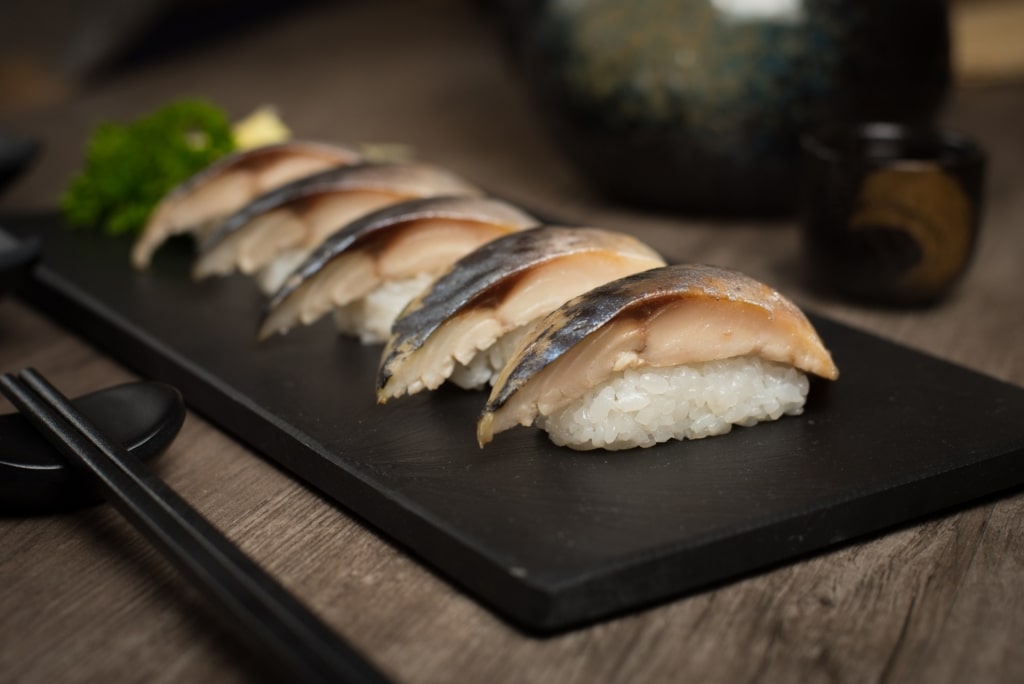
Saba sushi
Sashimi, and (to a lesser extent) sushi both use fresh, raw seafood. Kyoto, surrounded by Japanese mountains, and with no easy access to the sea, had to take a different approach.
Saba sushi is made with mackerel (“saba”) that has first been salted, and marinated at length in vinegar. Very typical of Kyoto, it’s at its best during fall in Japan.
The sushi is made with a base of rice, then garnished with seaweed, sesame seeds, or other toppings, to give a complex mix of flavors. This tasty dish is first known to have been made here in 1781.
Ayu
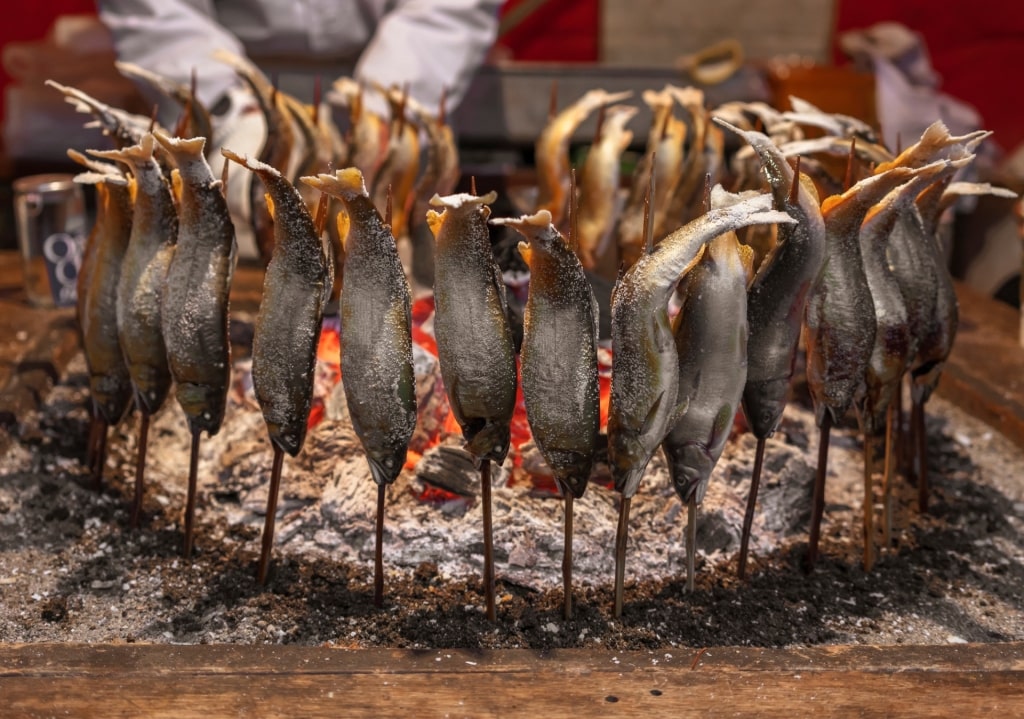
Ayu
While the Japanese city of Kyoto is not on the sea, it is on Lake Biwa, which supplies a trout-like fish known as ayu. With a slightly melon/cucumber-like taste, its season starts in spring and early summer, and runs through to late fall.
Freshwater fish can’t be used for sushi, as they must be cooked, and ayu is normally grilled with some salt. They are quite small, so you may find several on your plate.
Like trout, ayu have to battle upstream against the current to breed. This gives them a reputation for persistence that the Japanese admire.
Yudofu
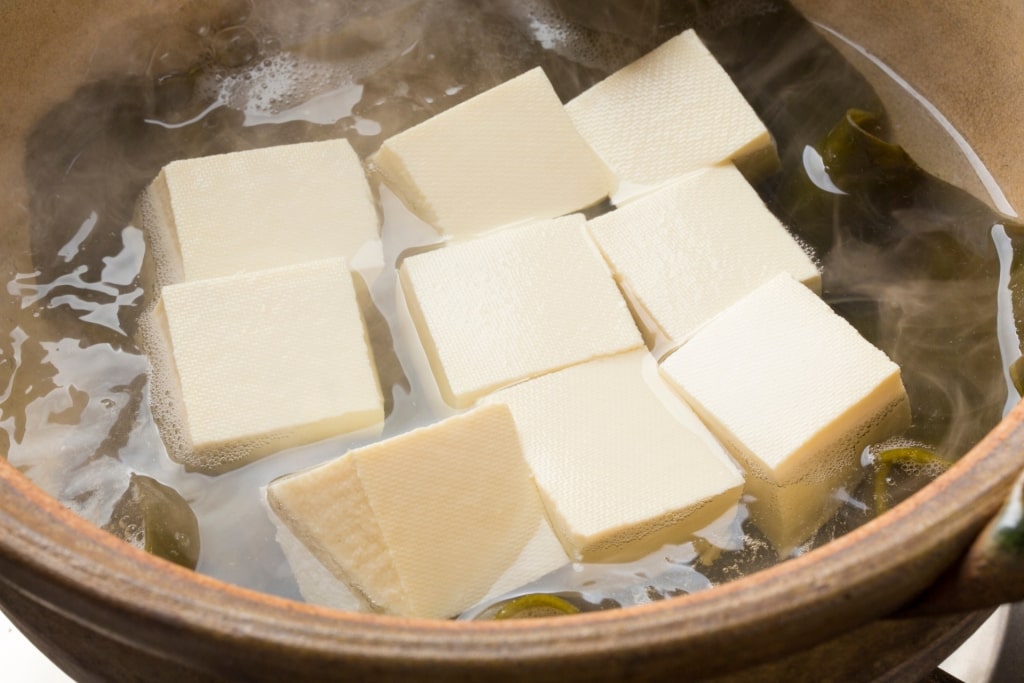
Yudofu
The English translation of Yudofu as “hot water tofu” more or less gives you the recipe. Tofu is cooked in a hot broth of water, flavored with dried kelp, to make a popular winter dish.
It’s essential to use fresh tofu, the cubes of which are eaten with a dipping soy or ponzu sauce. Extra flavor comes from ginger, radish, and chopped spring onions.
It’s not surprising this dish was long associated with the simple, vegetarian diet of Kyoto’s Buddhist temples. The temple of Nanzen-ji still has several restaurants around it, serving its signature Nanzenji tofu.
Shojin Ryori
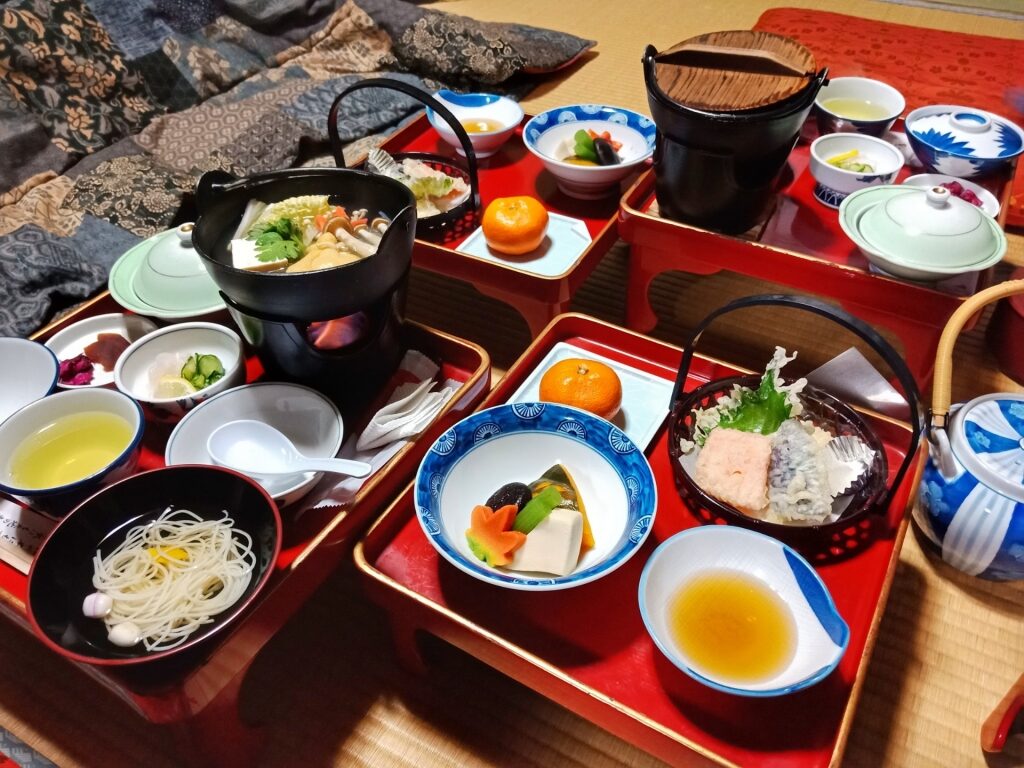
Shojin ryori
Buddhist monks adhere to a style of cooking called shojin ryori (“temple cuisine”).
These principles for meals in Zen temples came from China centuries ago. No meat, fish or other animal product is used, and strong flavors, such as garlic, onion or seasonings, are also shunned.
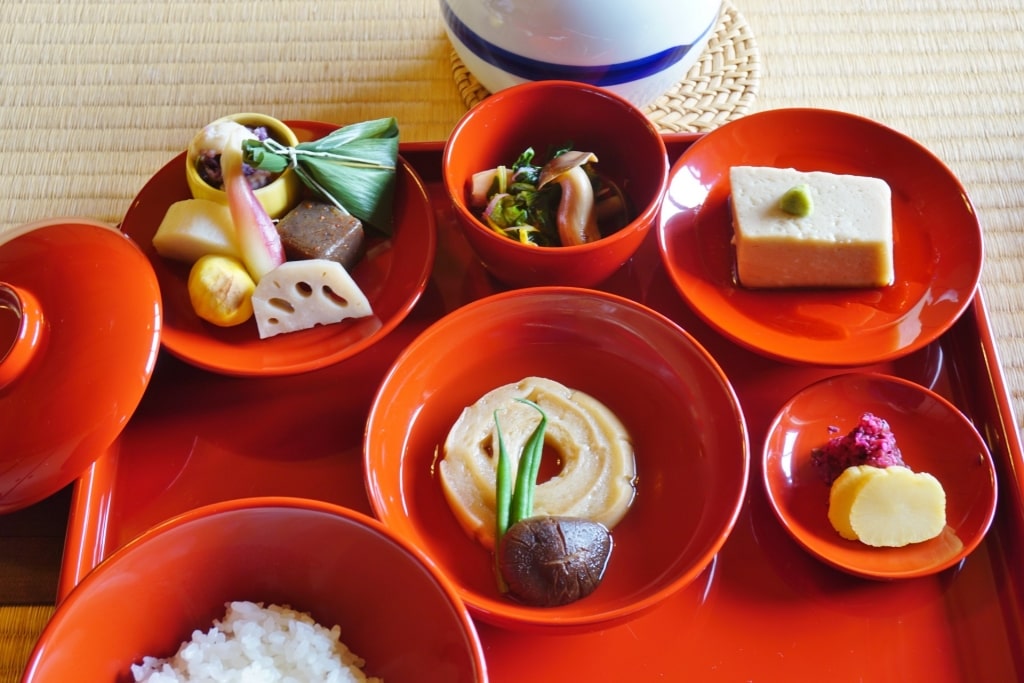
Shojin ryori
There is a concentration on fresh, highly seasonal produce, and wild plants. Every meal should be pleasing to the eye, using five colors, and tasty, using five natural flavors: sweet, sour, salty, bitter, and umami.
You’ll find many good shojin ryori restaurants in Kyoto. Some, but not all, are associated with nearby temples.
Kaiseki Ryori
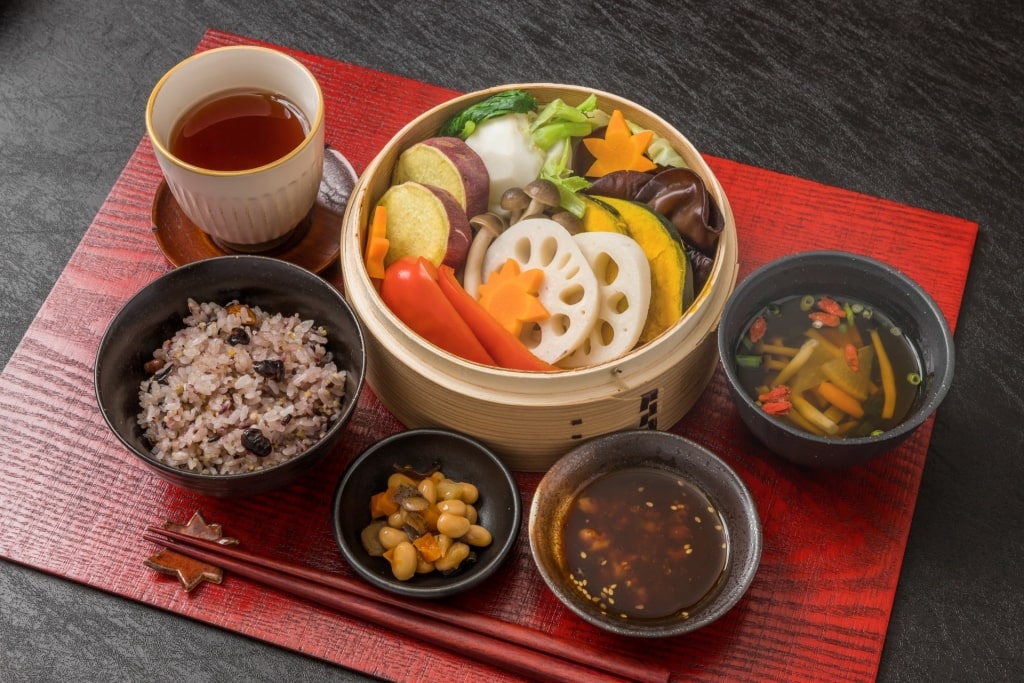
Kaiseki ryori
Kaiseki ryori is Japanese-style haute cuisine, with more than ten small dishes served one at a time. If that seems familiar, it’s because it inspired Western “nouvelle cuisine”.
The underlying principle is to concentrate on serving food that is at peak freshness, perfectly prepared. Presentation is vital to highlight the natural beauty of the simple, seasonal, and local ingredients.
Among the roughly 200 Michelin-recognized restaurants in Kyoto are many serving kaiseki cuisine, including several with three stars. It goes without saying that all need to be reserved weeks, or indeed months in advance.
Read: Japanese Food Culture: An Insider’s Guide
Obanzai Ryori
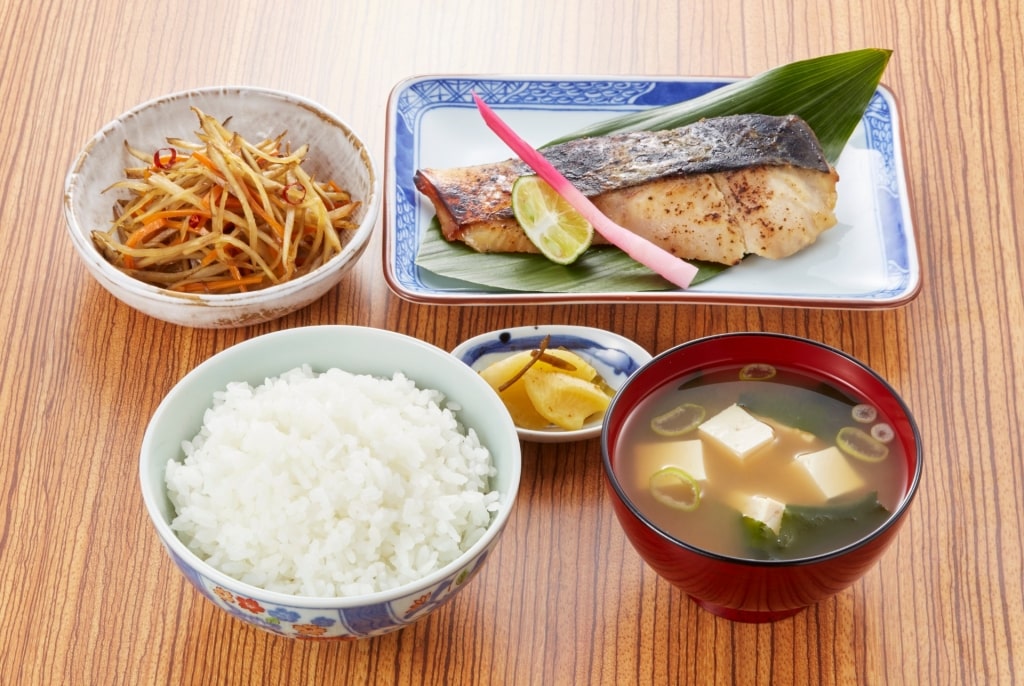
Obanzai ryori
If shojin ryori is for monks, and kaiseki ryori is for the nobility, then obanzai (“everyday dishes”) ryori is home-cooking. If you are ever wondering what to eat in Kyoto, this is the filling, tasty food you’ll find at the average restaurant.
Diners will normally order a set meal of soup, rice, and a main dish with some sides. The ingredients will be mainly local, and highly seasonal.
Vegetables, and seafood–such as poached fish—feature heavily, and everything is prepared simply. The result is a simple, delicious meal that feels very healthy.
Tsukemono
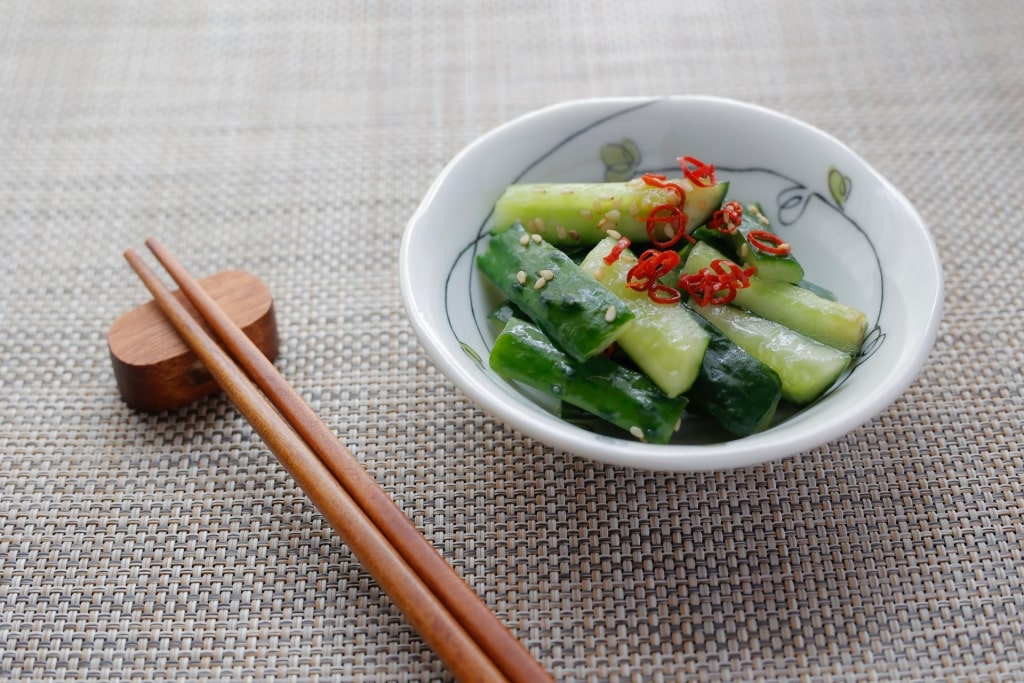
Tsukemono
Tsukemono, or “pickled things” may sound vague but, like the English word “pickles”, it basically refers to pickled vegetables or fruit. In Japanese cuisine, these are appreciated for their aroma, shape, and color, as much as their taste.
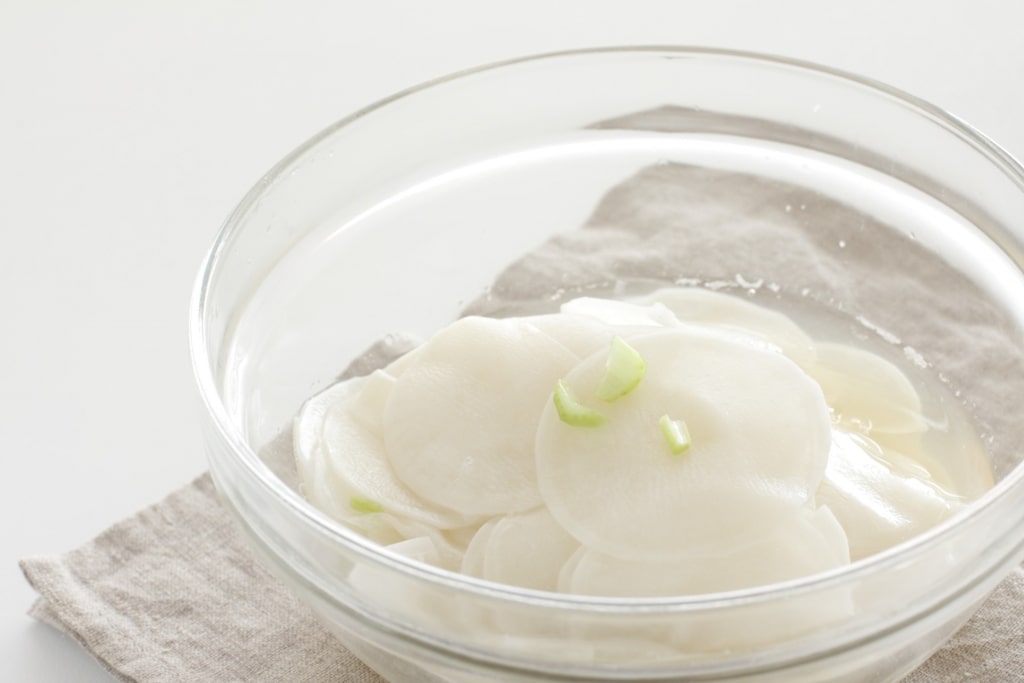
Senmai zuke
The vegetables are usually picked in salt brine, or soy sauce, but fermented rice bran is another option with a taste that’s more sour. Kyoto has a speciality called senmai zuke (“thousand layer pickle”), that uses sweet vinegar and chili to pickle turnips.
Tsukemono is a side dish to almost any Japanese meal to clear the palate, and help digestion. Pickled ginger may be familiar to you from eating sushi, as is pickled daikon—yellow radish.
Read: What Is Kyoto Known For?
Kyo Yasai
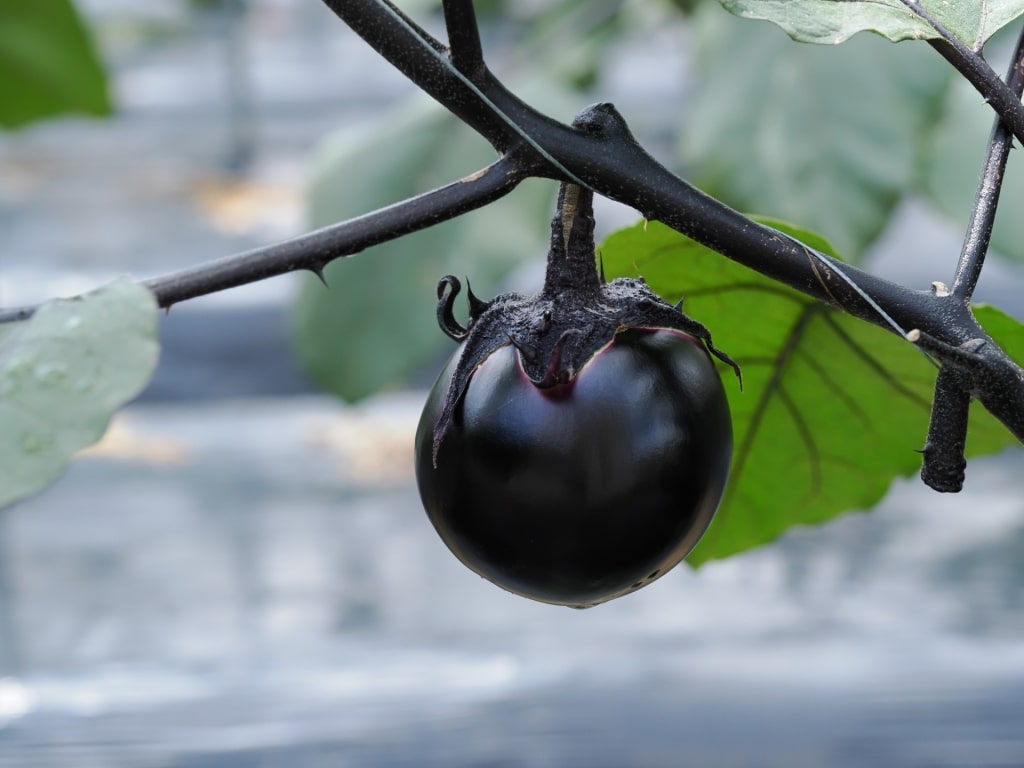
Kyo yasai
Kyoto was the imperial capital of Japan until 1868 and as such, had its pick of Japan’s vegetables. The best were carefully cultivated to produce local varieties that are now recognised as kyo yasai—“Kyoto vegetables”.
There are roughly 20 key vegetables, all of which must have been cultivated in the area for at least a century. These range from familiar ones such as pumpkins and eggplant to the more exotic bamboo, or murasaki zukin (purple soy beans).
While expensive, all are vital to kyo ryori (“Kyoto cuisine”). Their strong flavors, interesting shapes, and colors bring to life dishes traditionally made with no seasoning.
Matsutake
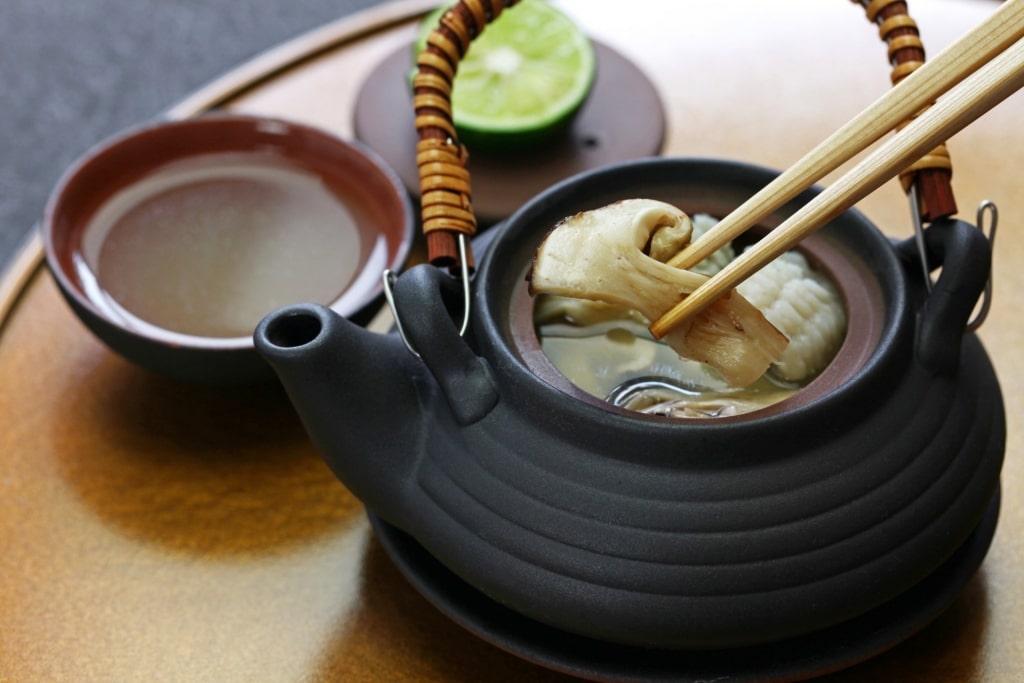
Matsutake
Among the Kyo Yasai (locally produced vegetables) are several that are strongly associated with a particular season. Masutake is a mushroom, found under red pines, that leads its strong, spicy flavor very well to fall.
This “pine mushroom” is often compared to truffles, and can be equally expensive, if not more so. The taste is just as difficult to pin down as well, being peppery, fishy, and earthy.
It’s usually served in simple dishes such as matsutake-infused rice, or a hot pot. You can find dried matsutake in grocery stores for an interesting reminder of Kyoto.
Ebi-imo
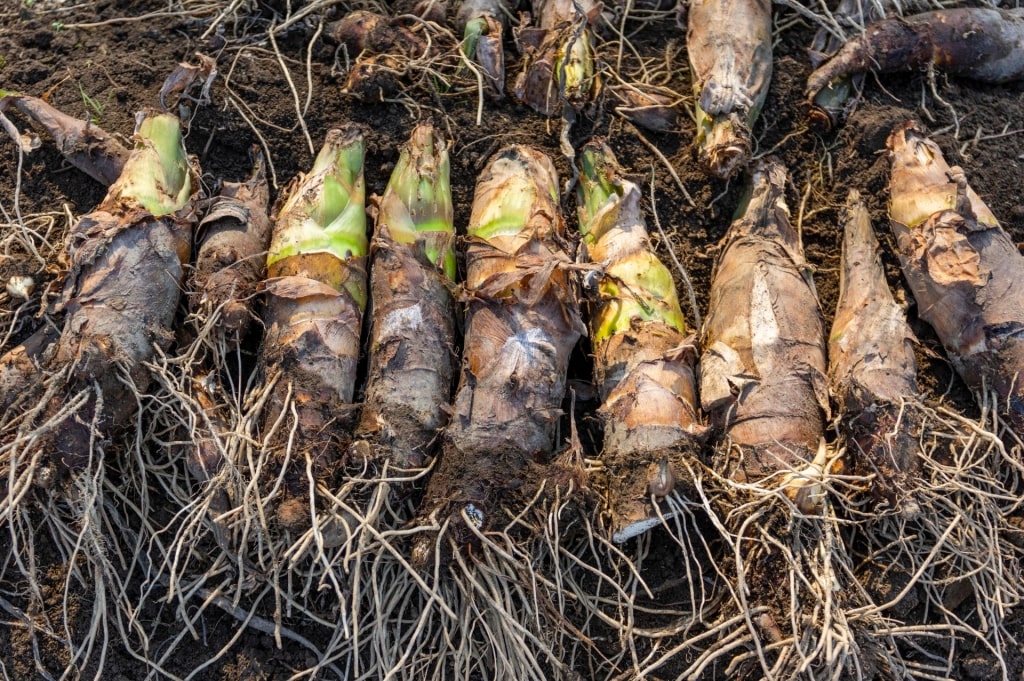
Ebi-imo
Another Kyoto vegetable that must be tried is ebi-imo, or “shrimp potato”. It’s a tuber, a form of taro, whose curved, striped appearance gives it its name.
Ebi-imo is strongly associated with winter, in common with other root vegetables such as turnips. It has a sticky texture, and tastes slightly sweet.
The vegetable holds its shape well when cooked, soaking in the flavors of anything else in the pot. A very popular winter dish is made by cooking simmering ebi-imo with dried codfish.
Chawanmushi
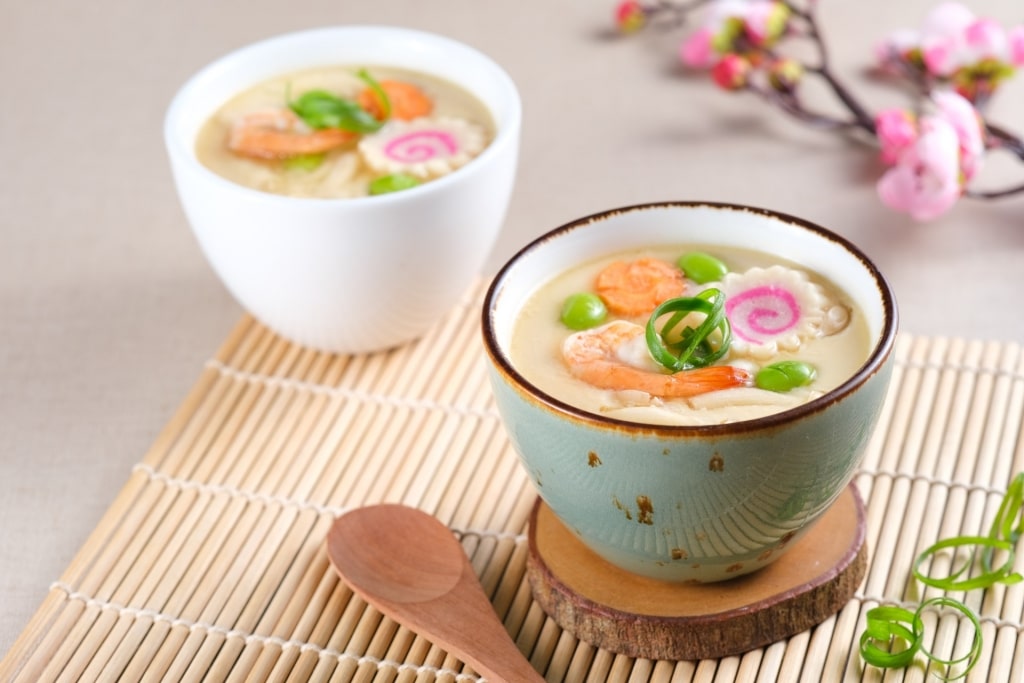
Chawanmushi
Chawanmushi is a sort of savory egg custard, served in a small cup. It’s a lovely appetizer, or sometimes one course in a larger main meal.
Chawan means “teacup”, and mushi means “steamed”. That pretty much tells you how it’s cooked: steamed in the bowl, or cup.
Flavor comes from dashi (seaweed-based stock), soy sauce, and ingredients such as shiitake mushroom, ginkgo nuts, chicken, or shrimp. It can be served warm, but also makes a delicious cold treat on hot days.
Yuba
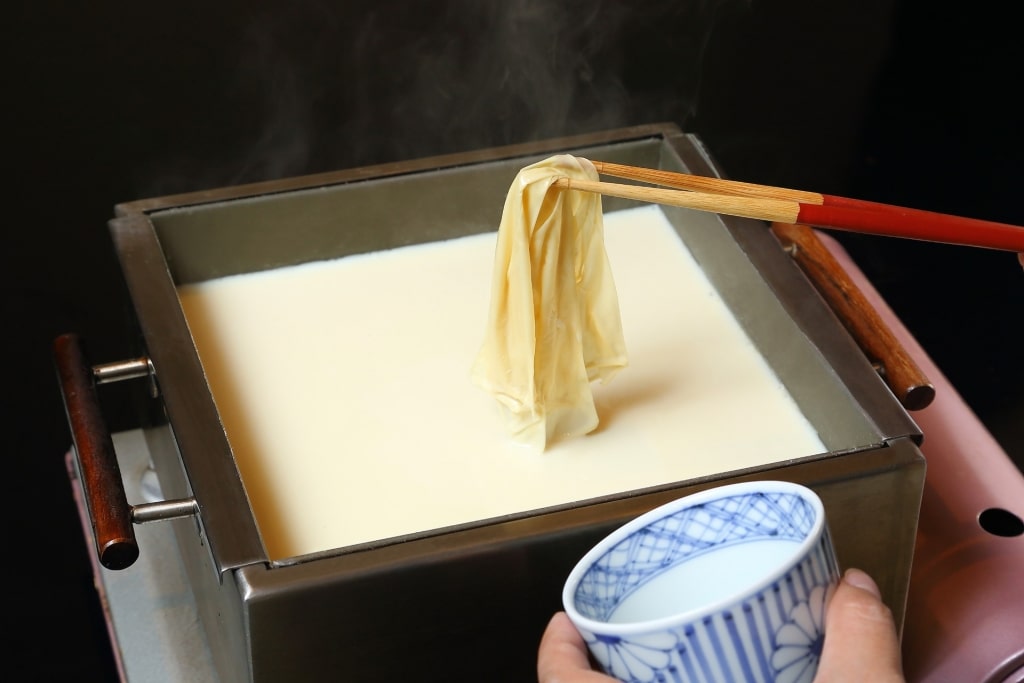
Yuba
The skin that forms in the pan when soy milk is boiled is known as yuba. You may not be surprised to learn that it’s valued as an ingredient in its own right in Japanese cuisine.
With the same neutral, nutty taste as tofu—but slightly denser, and chewier—yuba is most valued in sho-jin cuisine. It can be fresh or dried, formed into sheets, noodles or chopped, and it gives texture to any dish.
It’s such a versatile ingredient—even used to mimic meat—that you are likely to find yuba in many meals in Kyoto. Dried yuba makes a great present for any cooks you know to experiment with.
Kuzukiri
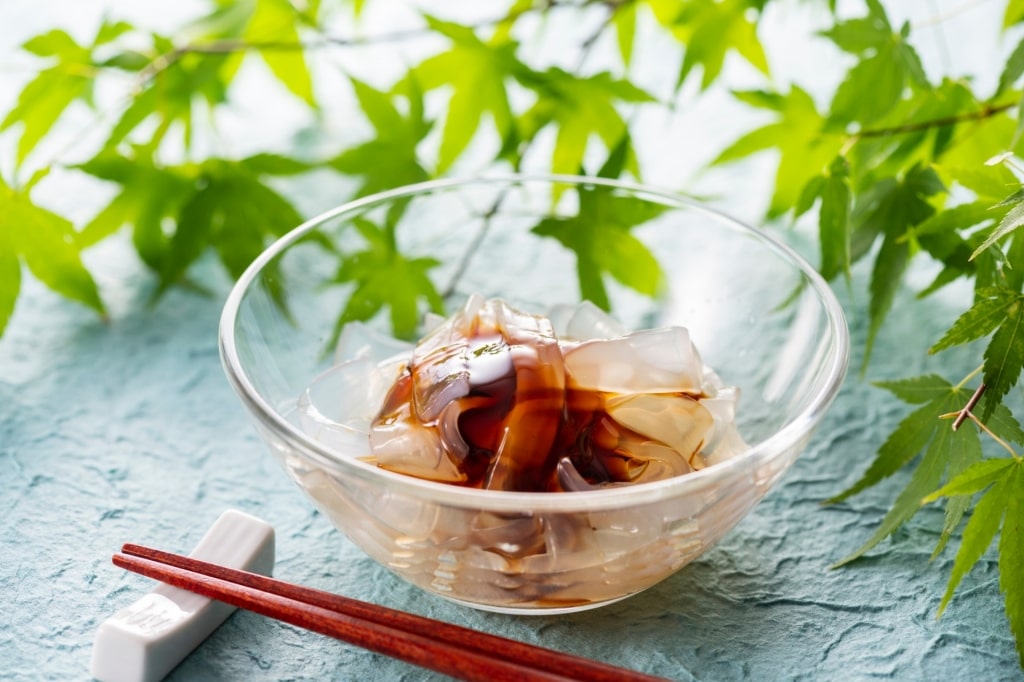
Kuzukiri
Kuzukiri is a transparent thin, wide noodle made from the starch of the kudzu (Japanese arrowroot) plant. Slick, almost jelly-like, they are considered very healthy, and a great hangover cure.
In winter, they are stirred into a hot pot to make thick, rich broth. In summer, they are served cold as a dessert with a sauce made from kuromitsu (“black honey”), a form of molasses.
This dessert is a common one in Kyoto tea houses, but has to be made freshly. Both kuzukiri and kuromitsu are common ingredients in wagashi, sweet treats typically served at a tea ceremony.
Taiyaki
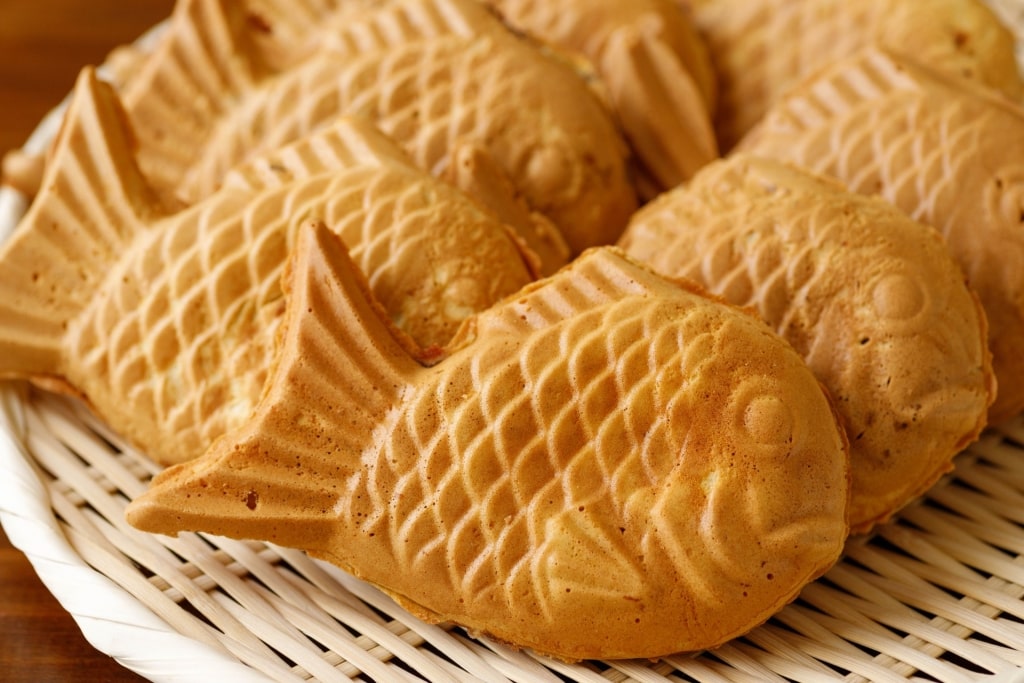
Taiyaki
This popular street food is a fish-shaped treat made with pancake batter, and a filling of sweet red bean paste, or custard. Its design is based on sea bream (“tai”), thought to be lucky in Japanese culture (“medetai” means “good luck”).
Taiyaki is found throughout Japan, although Kyoto has two local variants that are very unusual. White mochi taiyaki are made with a chewy mochi (rice flour) batter, and filled with custard.
An even more localized version is made with matcha, Kyoto’s slightly bitter, earthy green tea. It’s usually mixed with the red bean filling to make a rich sweet/umami combination.
Yatsuhashi
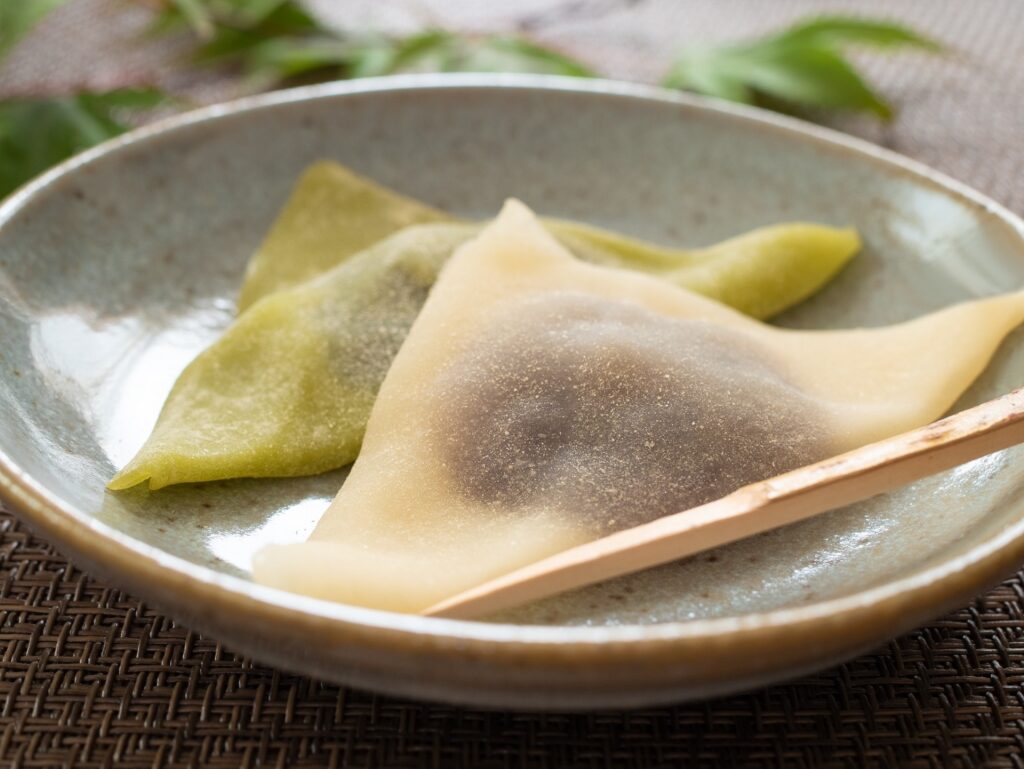
Yatsuhashi
While taiyaki originated in Tokyo, and now have a local flavor, that taste was borrowed from yatsuhashi. These are triangular pastry parcels made from mochi (rice flour), often flavored with the likes of sesame, cinnamon or green tea.
Hard-baked to become crispy, they are traditionally filled with red bean paste. Nowadays, you’ll find plenty of variations, including chocolate and fruit.
They are served as a dessert, either warm from the oven, or in summer, cold. Boxes of yatsuhashi are also a very popular souvenir from Kyoto.
Wagashi
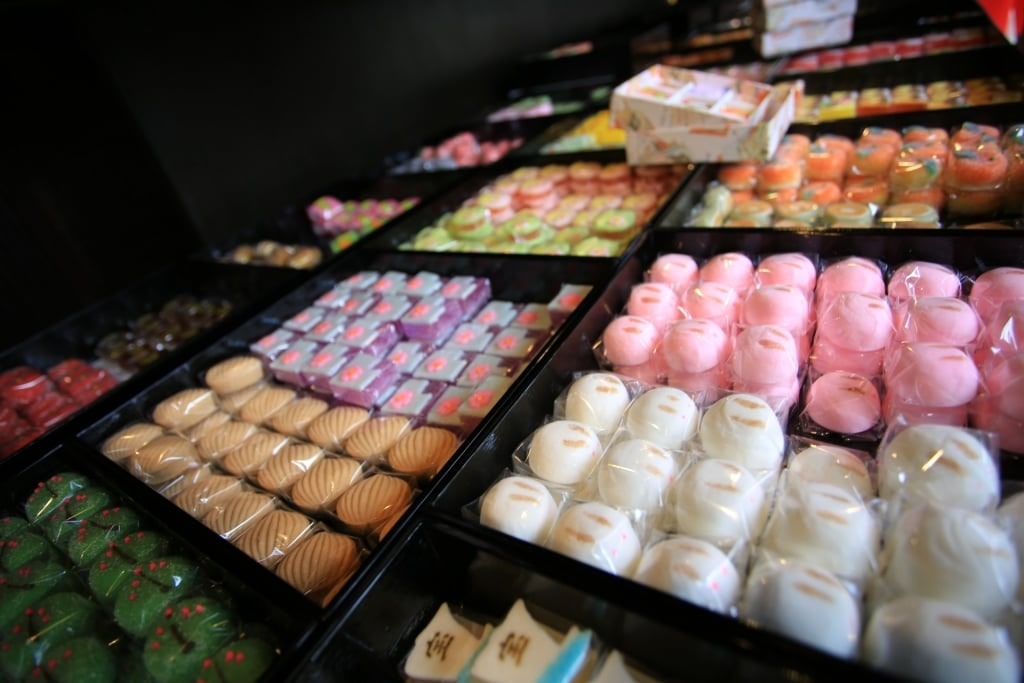
Wagashi
Taiyaki and yatsuhashi are two notable examples of wagashi, sweet treats traditionally associated with the Japanese tea ceremony. “Wa” means “Japanese”, and “gashi” means confectionery.
These sweet traditional pastries are the perfect complement to bitter green tea. However, the mix of powdery, bitter tea, and sweet anko (red bean paste) filling can be an acquired taste.
There are several subsets of wagashi, roughly based on how moist or recently made they are. Nama-gashi refers to the freshest confections, made to be eaten immediately.
At the top end of these are jo-namagashi, which are exquisite works of art, often to seasonal designs. Han-namagashi are semi-baked, drier confections that are easier to take home.
Matcha
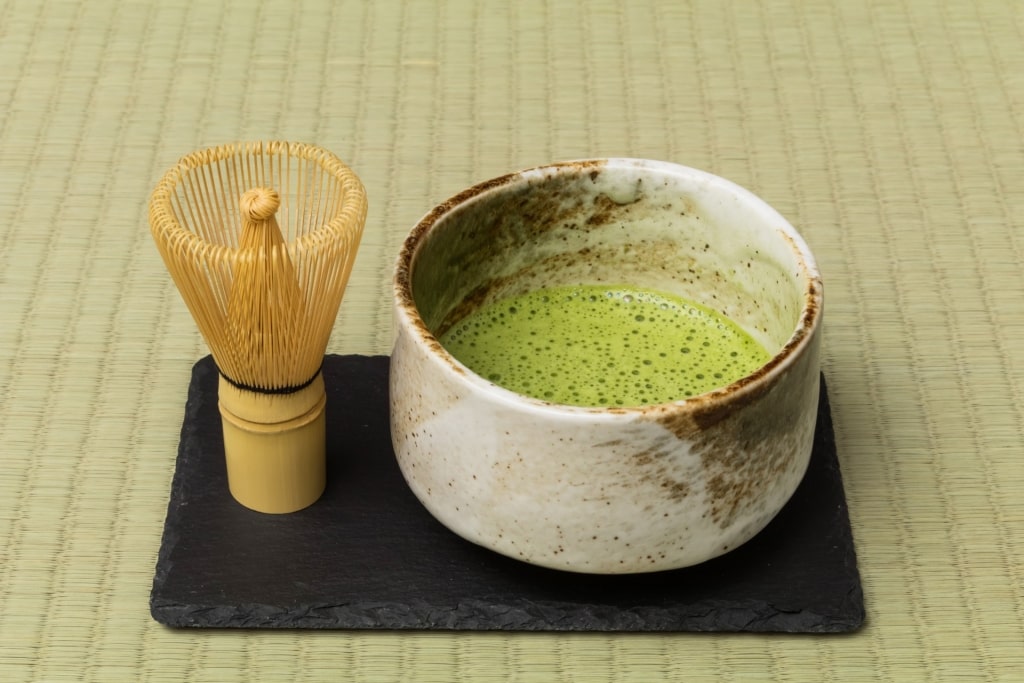
Matcha
It’s no surprise that the old capital is linked to ceremonial green tea. The Uji region near Kyoto is thought to have the very best climate for growing the strongly flavored green tea that Japan is known for.
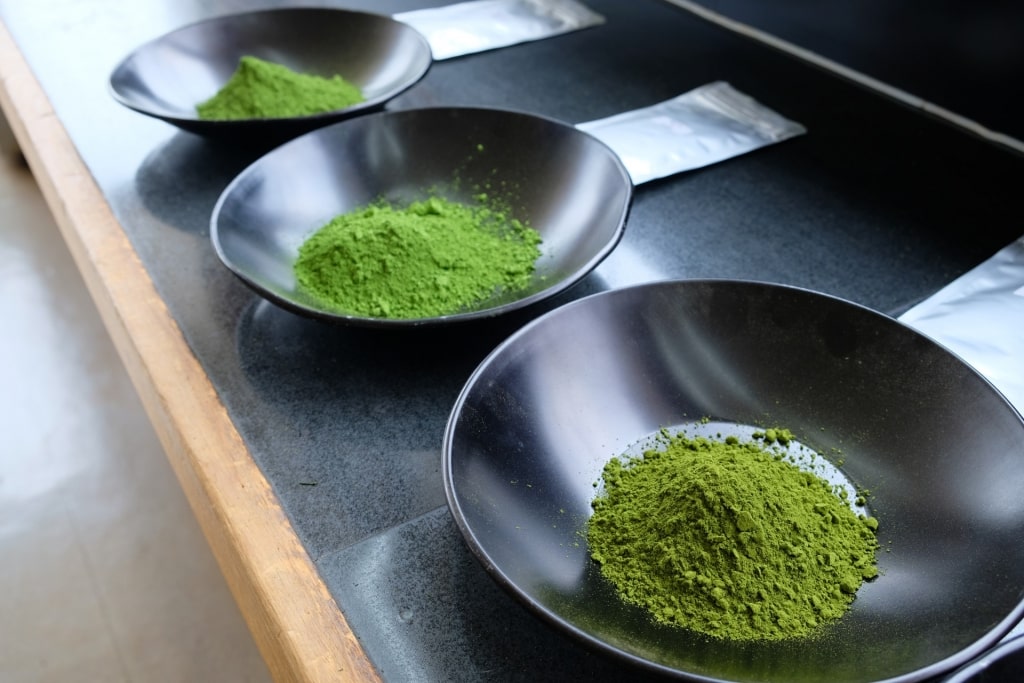
Matcha
The tea is dried and ground into a fine powder to produce matcha, one of the best things to buy in Japan. Green tea made by boiling the actual tea leaves is called sencha.
Matcha is central to the Japanese tea ceremony, linked to Buddhism for hundreds of years. The ritualized process of making, and serving the tea focuses on finding peace in simplicity, the concept known as “wabi-sabi”.
Read: Best Things to Do in Kyoto
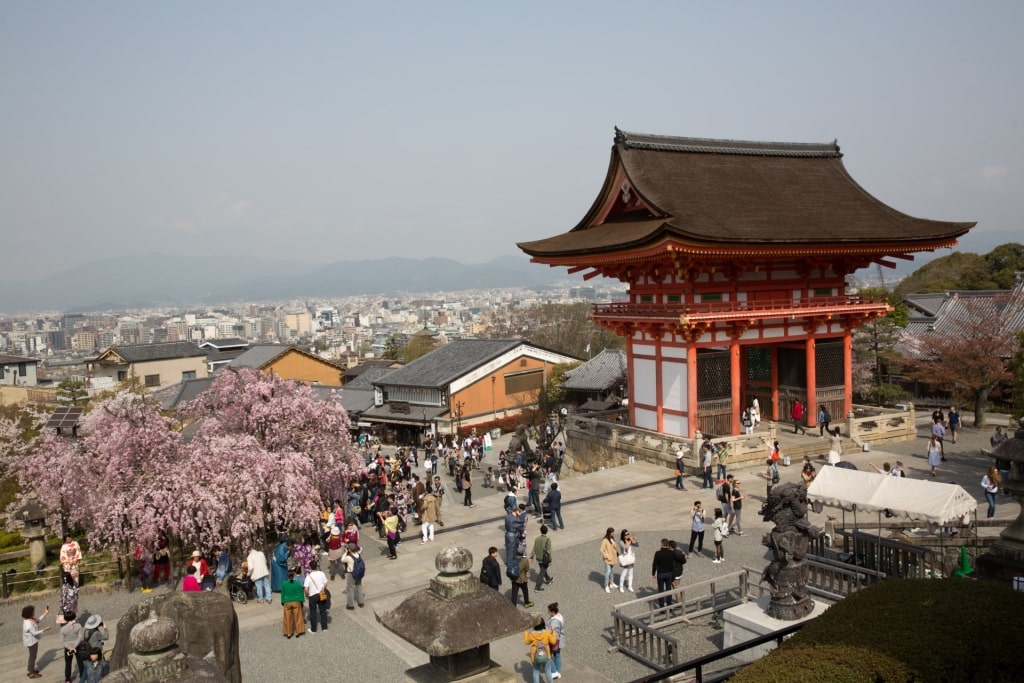
Kiyomizu Dera Temple, Kyoto
Has this guide to the best things to eat in Kyoto given you the taste for a visit? Browse Celebrity’s Kyoto cruises and book your adventure into the heart of Japanese cuisine.
